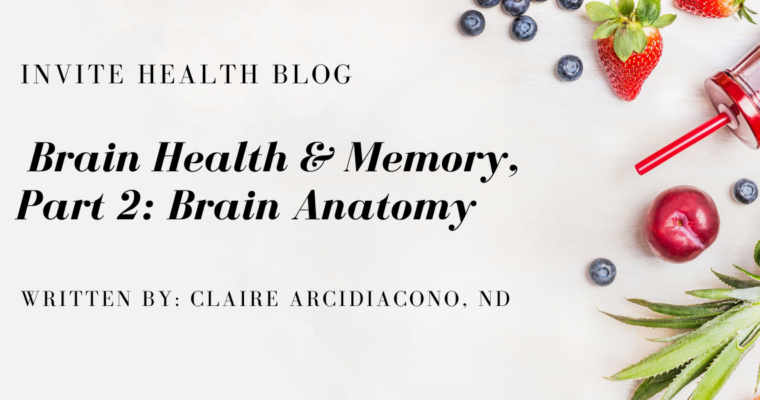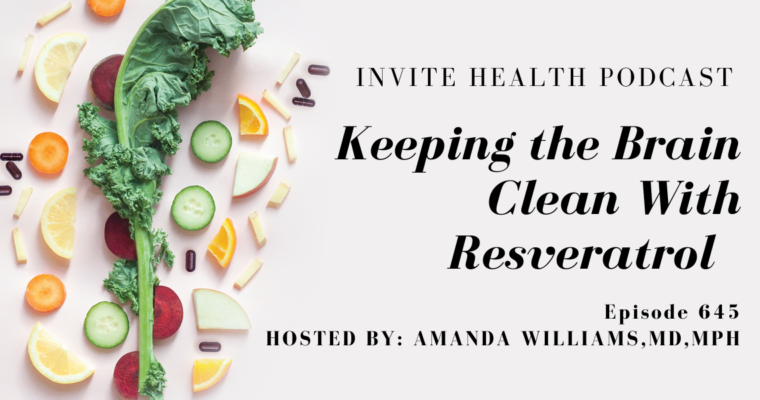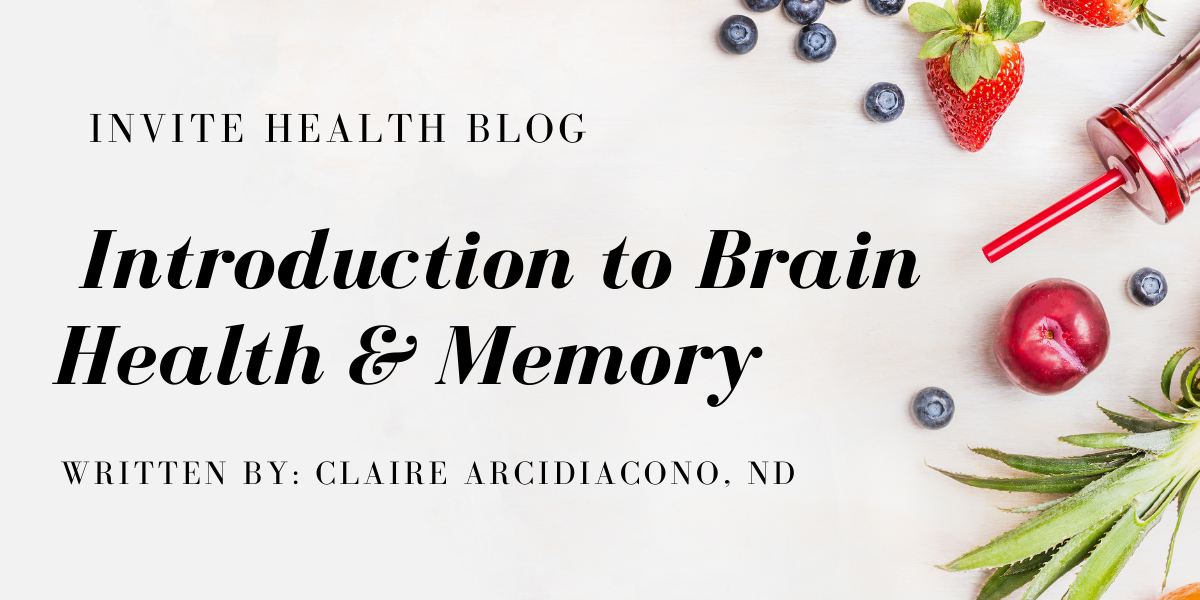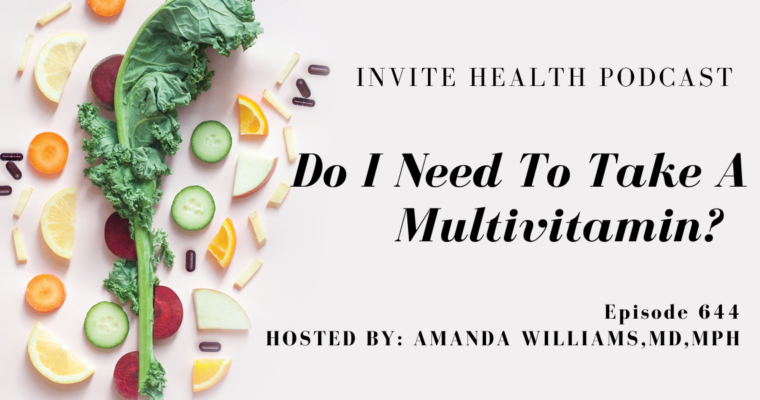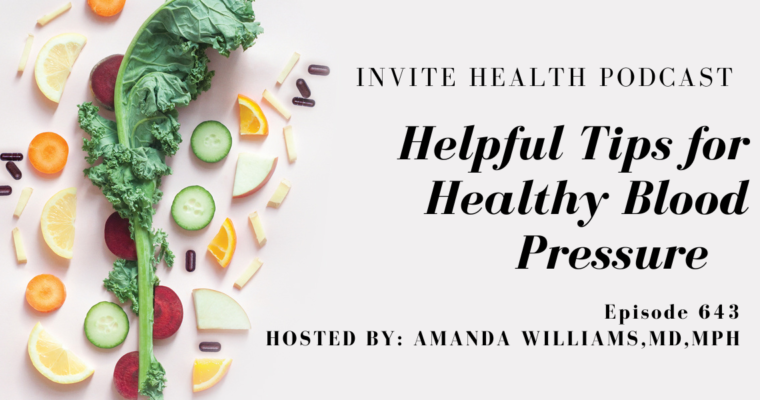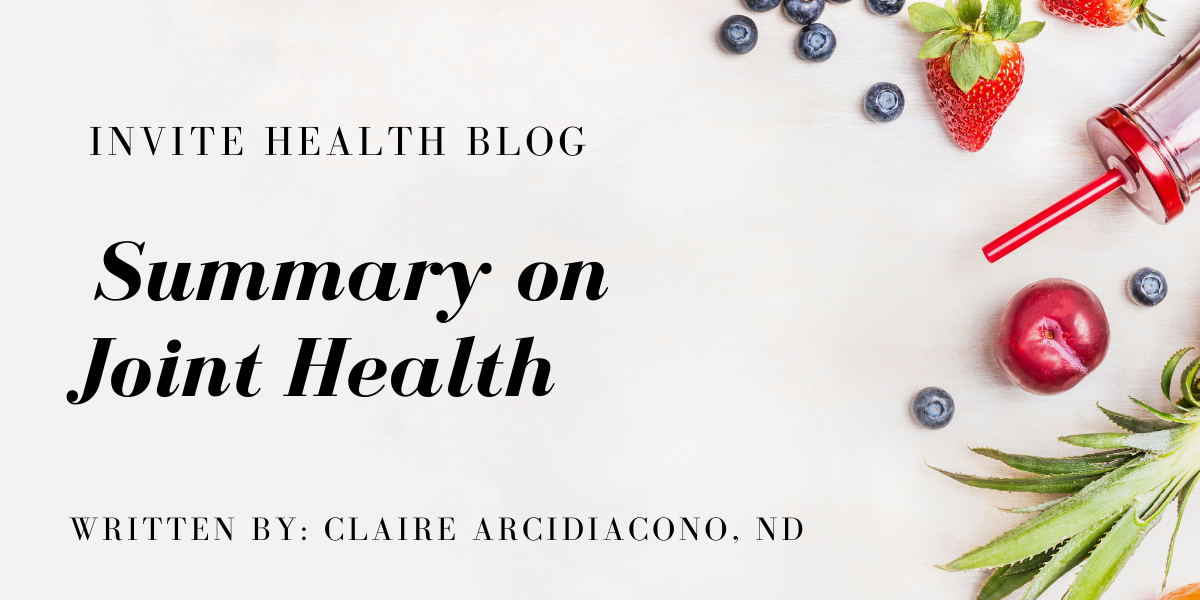Written by: Dr. Claire Arcidiacono, ND
For further questions or concerns email me at [email protected]†

In this next series we will be covering a topic that my fellow nutritionists and I get asked about all of the time. This is an important topic that affects almost everyone be it directly or indirectly via a family member or friend. What is this topic you ask? This topic is brain health and along with brain health is of course memory. In this series we will cover a number of different subjects ranging from tests that are important to different brain health concerns such as Alzheimer and dementia. I will also cover such concerns such as strokes and concussions. †
To start with I wanted to go over a very general anatomy lesson regarding the brain. Now I know that you might be thinking eek that’s going to be complex!! I don’t want to read that! Don’t worry I’ve tried to keep it as simple as possible. While I know that the brain is much more complex than what I have gone over here like I said this is an overview that will hopefully help you understand things later on when we get into more condition specific blogs. †
Everyone has heard of the fact that the brain has white and gray matter. But what exactly does this mean? In the brain’s gray matter is the darker outer portion whereas the white matter is the lighter inner section. Please see the attached picture (1) †

The gray matter and white matter look different because they are different. The cells that make up the gray matter are what we call somas, and they are basically round cells. The white matter on the other hand mostly contains axons which are long sticks that connect the neurons together. † Please see the attached picture (1)
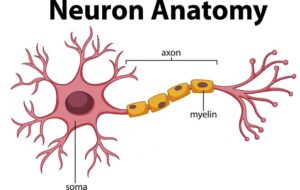
In addition to looking different these two parts of the brain have different jobs. The gray matter conducts, processes and sends information to the rest of the body. In other words, it processes and interprets the information. The white matter which receives sensory information from the rest of the body interprets the received information and sends it on to where it needs to go. † (2)
Why is this important to know? Because when it comes to brain health this means that different parts of the brain react differently to injury. And in that case will show different symptoms. For example, an issue in the gray matter can affect your brain’s ability to interpret sensory information and may even lead to symptoms such as muscle weakness, and even tingling. Damage to the white matter can affect your ability to move and respond to outside stimuli. † (1)
Going further into brain anatomy we break the brain down into the cerebrum, brain stem and the cerebellum. Please see the attached picture. † (1)
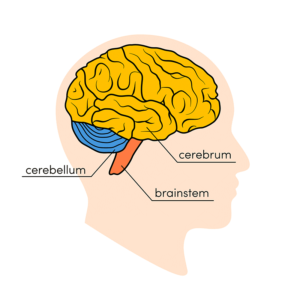
Now remember the brain isn’t actually blue or red or yellow. It’s actually those white and gray parts we spoke about. Now to start with the largest part of the brain as you can see is in the front. This called the cerebrum; this part of the brain is divided into 2 parts or hemispheres; I will speak about this more later. But what does the cerebrum do? It helps to control speech, judgment, thinking, as well as problem solving. It also controls emotions and learning. Additionally, it helps initiate and coordinates movement as well as regulate body temperature. Lastly it also helps regulate vision, touch and the other senses. † (3)
The brain stem is exactly what it sounds like and is a “stem” connecting the cerebrum with the spinal cord. It is made of 3 parts- the mid brain, the pons and medulla. The brain stem affects abilities such as hearing, movement, and the ability to create responses to our environment. It also affects tear production, chewing, vision and balance as well as the ability to change our facial expressions. It also controls sneezing, vomiting, coughing and swallowing. Lastly and perhaps most importantly it regulates important bodily functions such as heart rhythm, breathing, blood flow and our oxygen/carbon dioxide balance control. † (4)
Lastly the cerebellum or “little brain” is at the back of the brain. This part of the brain is responsible for voluntary movements and helps with posture/ balance equilibrium. As we learn more about the brain, we are learning that the cerebellum has roles in our thoughts/behavior as well as in our emotions. † (5)
Next week, we will continue our introduction to brain anatomy and the different structures that are important in our brain. We will cover such topics as the cranial nerves as well as circulation in the brain and just what supplies the important nutrients to this vital organ. †
REFERENCES
- https://www.hopkinsmedicine.org/health/conditions-and-diseases/anatomy-of-the-brain
- https://www.spinalcord.com/blog/gray-matter-vs-white-matter-in-the-brain
- Arnould-Taylor, William (1998). A Textbook of Anatomy and Physiology. Nelson Thornes. p. 52. ISBN 9780748736348. Retrieved 27 January 2015.
- https://en.wikipedia.org/wiki/Brainstem
- https://my.clevelandclinic.org/health/body/23418-cerebellum


